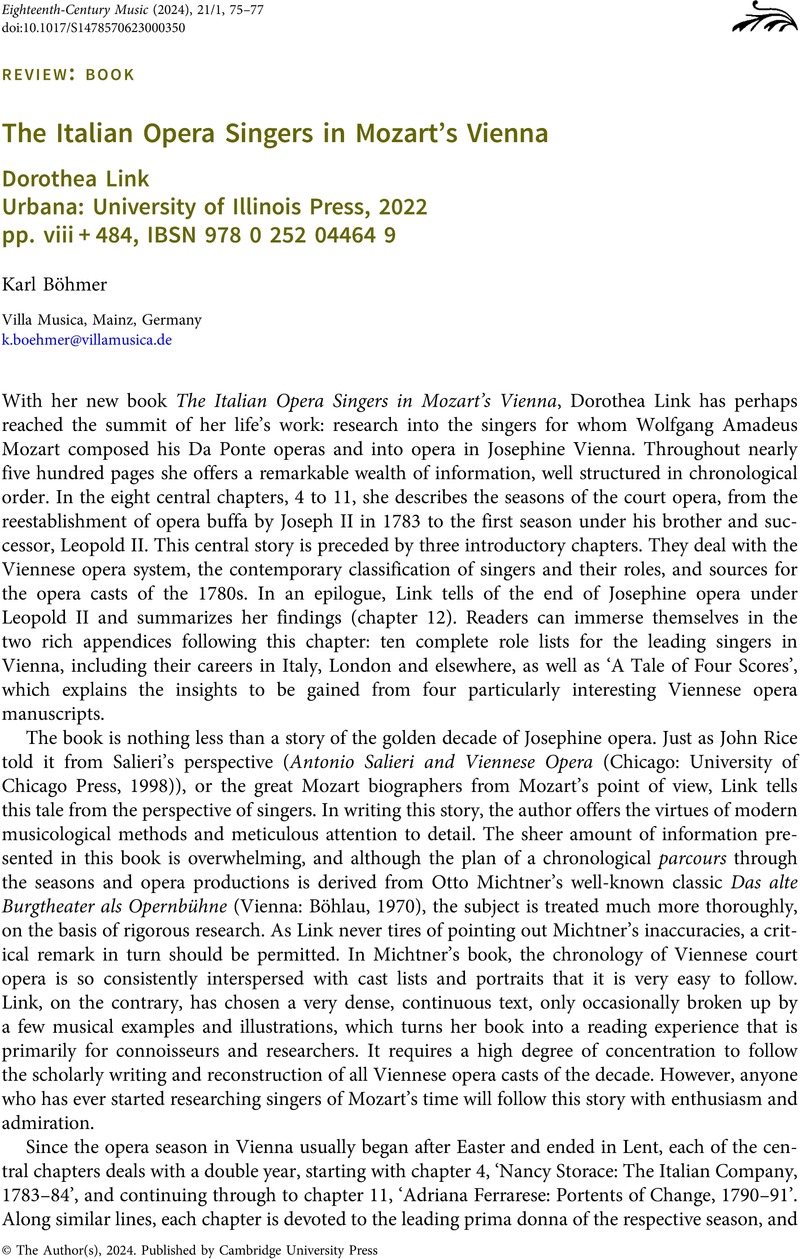No CrossRef data available.
Article contents
The Italian Opera Singers in Mozart's Vienna Dorothea Link Urbana: University of Illinois Press, 2022 pp. viii + 484, IBSN 978 0 252 04464 9
Review products
The Italian Opera Singers in Mozart's Vienna Dorothea Link Urbana: University of Illinois Press, 2022 pp. viii + 484, IBSN 978 0 252 04464 9
Published online by Cambridge University Press: 06 February 2024
Abstract
An abstract is not available for this content so a preview has been provided. Please use the Get access link above for information on how to access this content.

- Type
- Review: Book
- Information
- Copyright
- Copyright © The Author(s), 2024. Published by Cambridge University Press



